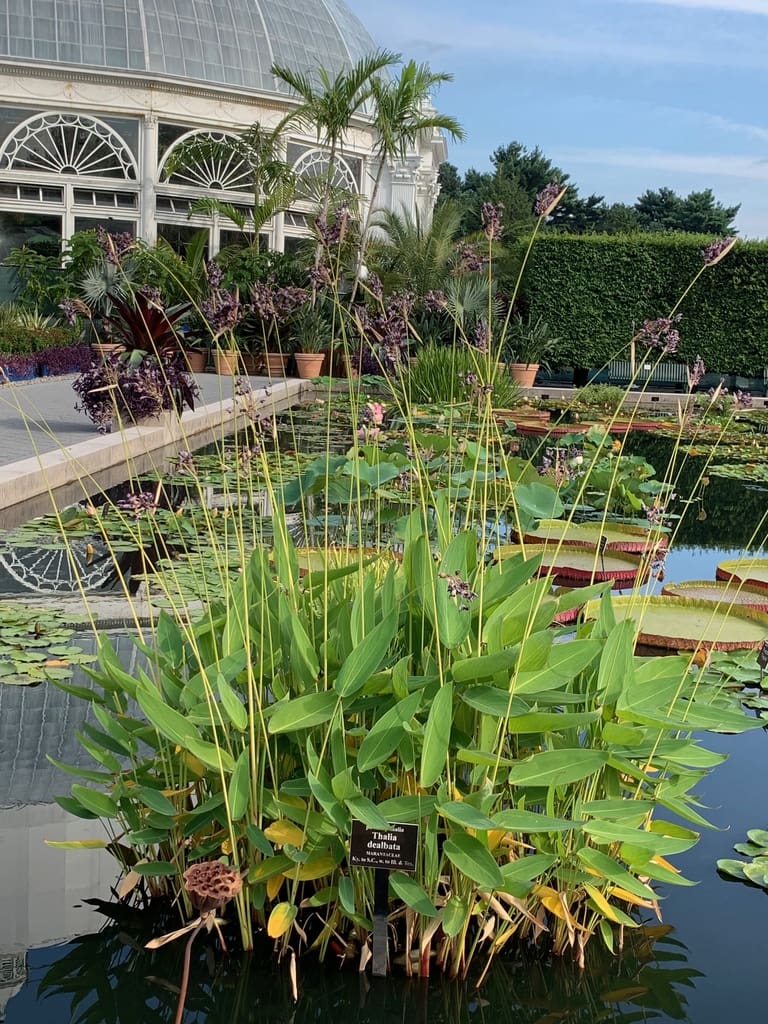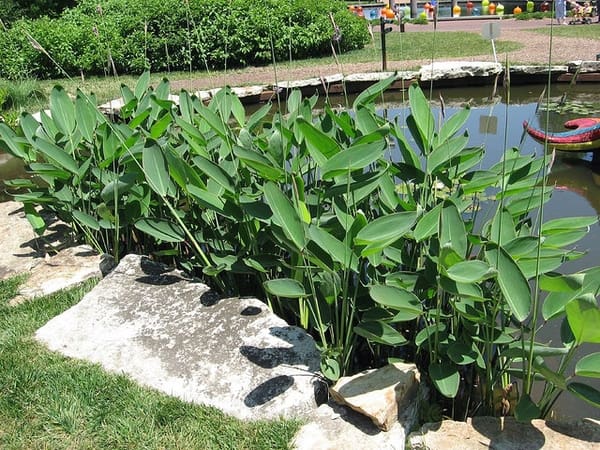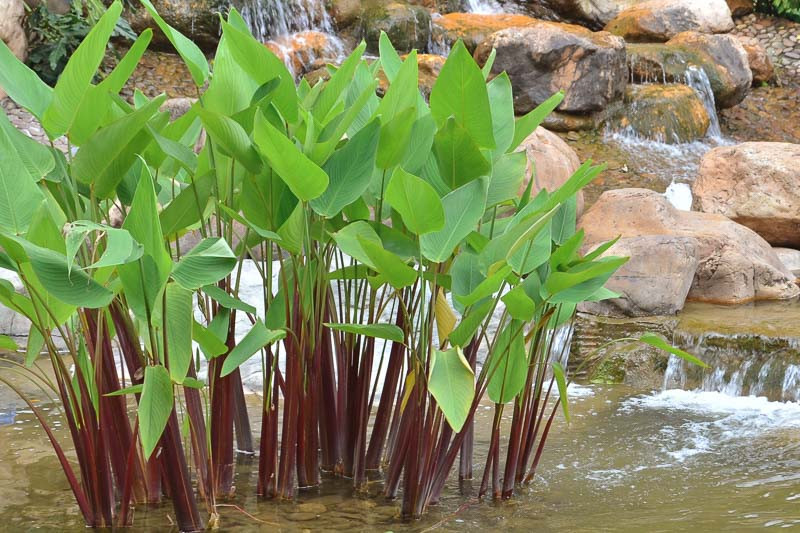You are about to embark on a scholarly exploration of the aquatic plant known as Thalia, a distinctive entity in the world of water flora. The ensuing discourse will encompass the salient characteristics of this fascinating plant species, extending from its unique physical attributes to its adaptability within diverse aquatic environments. The insightful delineations are set to enhance your understanding and appreciation of Thalia, enthralling you to the remarkable intricacies of aquatic botany.

Taxonomy of Thalia
Thalia, a genus of plants in the family Marantaceae, is a group of perennial aquatic and semi-aquatic, herbaceous plants known for their ornamental beauty and ecological significance. The genus is named after the Muse Thalia from Greek mythology, symbolizing the beauty and richness of these plants. Ranging from the Americas to Africa, this genus is diverse and offers researchers a fascinating study of botanical taxonomy.
Genus Overview
The genus Thalia is comprised of several species that present an array of plant types. From shrubs to herbaceous growth forms, the genus shows great diversity in botanical characteristics, reflecting its ability to adapt to a variety of environments. This adaptability is a key factor in its widespread distribution across different continents.
Species of Thalia
Various species exists under the Thalia group. Known species include Thalia geniculata, Thalia dealbata, and Thalia multiflora, to name just a few. These species present a myriad of distinctive characteristics, offering unique qualities—from varying leaf forms to different flower formations.
Habitat and Distribution
Thalia are predominantly present in the Americas and parts of Africa. They thrive in tropical, subtropical, and temperate regions and are most commonly found in marshes and water-logged areas. The global distribution of Thalia signifies the adaptability and resilience of this genus.
Morphology of Thalia
Thalia is known for its ornamental appeal, which comes largely from its captivating morphological characteristics. With long stem, broad leaves, and striking flowers, Thalia plants present a visually pleasing botanical display.
Leaf Structure
Most Thalia species have large, oval-shaped leaves that have a broad base and a pointed tip. The leaves are pinnately veined, representing a network of veins that branch out from the midrib towards the leaf edges. The leaves sprout out from the stem in an alternate manner, adding to the aesthetic arrangement of the plant.
Stem Structure
The stems of Thalia plants are typically elongated and robust, capable of reaching great heights. They lack secondary growth, which makes them less woody and more flexible. These stiff and sturdy, yet flexible stems offer great support to the large leaves and flowers the plant carries.
Root System
Thalia plants have a fibrous root system where the roots spread out horizontally in the soil or water substrate. This root architecture allows the plant to effectively colonize the growing medium and exploit resources from a wide area. The roots also play a role in the anchorage of the plant in the aquatic or semi-aquatic habitats in which they grow.
Flower Structure
The inflorescence or flower structure of Thalia is a focal point of its ornamental appeal. Long, impressive spikes rise from the main stem, adorned by clusters of flowers that hold an arresting display of color and texture.

Life Cycle of Thalia
Like many other botanical species, the life cycle of Thalia includes seed dispersal, germination, growth and development, and blooming and pollination stages.
Seed Dispersal
Thalia species produce oblong or spherical seeds that can be dispersed by water, wind, or animal vectors. In aquatic environments, its seeds are often transported by water currents to new locations.
Germination Process
The seeds of Thalia require moisture for germination. Given its natural habitats, the wet conditions are ideal for germination and the early growth stages of the plant. Light may also play a part in germination, as most seeds are light-sensitive and need ample sunlight for growth.
Growth and Development
Thalia plants grow and develop rapidly in the right conditions. Their streamlined shape and buoyant leaves enable them to withstand varying water levels and weather conditions. The vigorous growth of Thalia is facilitated by a network of fibrous roots that absorb nutrients and water from the surrounding environment.
Blooming and Pollination
Blooming in Thalia species is a spectacular process. The tall inflorescence holds a multitude of flowers that bloom sequentially. Pollination is often facilitated by various insect species, including bees and butterflies, which are attracted to the showy flowers and the nectar they produce.
Ecological Role of Thalia
Thalia plays an important role in its ecosystems. Apart from its contributions to the aesthetics of a landscape, Thalia has several ecological functions.
Role in Aquatic Ecosystems
For aquatic and wetland ecosystems, Thalia species offer important contributions. They prevent soil erosion with their extensive root systems, purify water by absorbing harmful substances, and provide habitat to numerous wetland creatures.
Interactions with Aquatic Fauna
A variety of aquatic fauna are drawn to Thalia plants. The plants provide food and suitable nesting and breeding habitats for a range of aquatic birds, insects, and amphibians. The dense growth of some Thalia species forms a refuge for several smaller organisms.
Thalia as a Food Source
Thalia seeds and tubers are a food source for several animal species. In many parts of the world, they are also consumed by humans and are considered a valuable source of starch and other nutrients.

Thalia and Water Quality
Thalia has a crucial role in maintaining water quality. Its ability to uptake nutrients and the effects it has on algal blooms are significant contributions to aquatic environments.
Water Quality Indication
Thalia can serve as an indicator species due to their sensitivity to water conditions. They thrive in clean water bodies and their presence signals good water quality and a healthy ecosystem.
Thalia and Nutrient Uptake
Thalia plants uptake a significant amount of nutrients such as nitrogen and phosphorous from the water, improving the overall water quality. Their elaborate root systems efficiently absorb these nutrients, thus preventing eutrophication.
Effects on Algal Blooms
By absorbing excess nutrients, Thalia plants help in controlling algal blooms. Algal blooms occur in nutrient-rich conditions and can cause oxygen depletion in the water body, thereby affecting other aquatic life forms adversely.
Cultivation of Thalia
Growing Thalia isn’t necessarily complicated but does require certain conducive conditions and care.
Cultivation Conditions
Thalia prefers wet and sunlit areas. Well-irrigated soil or stagnant water bodies are ideal for Thalia cultivation. The plant is generally frost-sensitive, so warmer climates are preferred.
Caring Techniques
Thalia plants demand little care. However, they may require periodic pruning to control their growth. They also benefit from organic fertilization which helps in bolstering their nutrient intake and growth.
Propagation Methods
Thalia can be propagated through seed sowing or by dividing the rhizomes. Both methods need moist conditions for successful growth and development.

Thalia as Ornamental Plants
The vibrant aesthetic appeal of Thalia plants makes them popular in landscaping and garden design.
Landscaping with Thalia
With their lush foliage and attractive flowers, Thalia species are used to enhance the aesthetic value of landscapes. They are particularly suited for wet gardens, pond edges, and water features.
Aesthetic Benefits
The towering stature, striking leaf structure, and vibrant blooms of Thalia plants offer significant aesthetic benefits. Moreover, their seasonal changes provide year-round interest, enhancing the visual diversity of landscapes.
Increasing Biodiversity
By introducing Thalia plants into a landscape, biodiversity can be increased. The plants provide habitats and food sources for a variety of fauna, thus contributing to a richer ecosystem.
Thalia as Invasive Species
Despite their ecological and aesthetic benefits, Thalia plants can pose challenges when introduced to non-native environments. Their aggressive growth can lead to invasiveness, causing problems for native ecosystems.
Introduction to Non-native Habitats
Thalia species, when introduced to non-native habitats, can spread rapidly due to their robust nature and adaptive traits. Their fast growth and extensive root systems allow them to quickly colonize new areas, possibly leading to invasiveness.
Impacts on Native Ecosystems
Invasive Thalia can have negative effects on native plant species by out-competing them for resources. This can disrupt the balance of local ecosystems and reduce biodiversity.
Control Methods
Control measures include regular monitoring and timely removal of invasive Thalia plants. Cultivating native species that can compete effectively with Thalia and prevent their unchecked spreading is also an effective approach.

Thalia in Traditional Medicine
Thalia has been historically used for its medicinal properties and continues to hold potential for modern medical applications.
Historical Usage
In traditional medicine systems, particularly in the Americas and Africa, Thalia species have been used for treating a variety of ailments, including fever, inflammation, and digestive issues.
Modern Medicinal Applications
Though not widely used in modern medicine, research into the medicinal properties of Thalia species is ongoing. Their potential benefits in the treatment of various inflammatory diseases and potential anticancer activities are areas of interest.
Scientific Research
Recent scientific research on Thalia has focused on isolating bioactive compounds from the plant that may have medicinal applications. This scientific exploration holds promising opportunities for discovering new therapeutic uses for Thalia.
Conservation of Thalia
The conservation of Thalia species is important as they offer significant environmental, aesthetic, and potential medicinal benefits.
Threats to Thalia Populations
Despite their robustness, Thalia populations in some regions have shown decline due to habitat loss, pollution, and climate change. These threats underscore the need for conservation efforts.
Conservation Efforts
Local and international conservation organizations, botanical gardens, and sanctuaries have undertaken initiatives to conserve Thalia species. These include habitat preservation, cultivation of Thalia in controlled environments, and public education about their ecological importance.
Role of Botanical Gardens and Sanctuaries
Botanical gardens and sanctuaries play a vital role in Thalia conservation. They serve as reservoirs of genetic diversity and offer protected environments for Thalia populations to thrive. Additionally, they contribute to the generation and dissemination of scientific knowledge about Thalia’s ecological role and potential uses.
In conclusion, the genus Thalia represents a diverse group of plants that have significant benefits for both natural ecosystems and human cultures. While their fast growth can be a challenge in non-native environments, with careful management, Thalia can continue to offer benefits as ornamental plants, improve water quality, and increase biodiversity. Furthermore, the potential medicinal properties of Thalia demand ongoing research and conservation efforts.